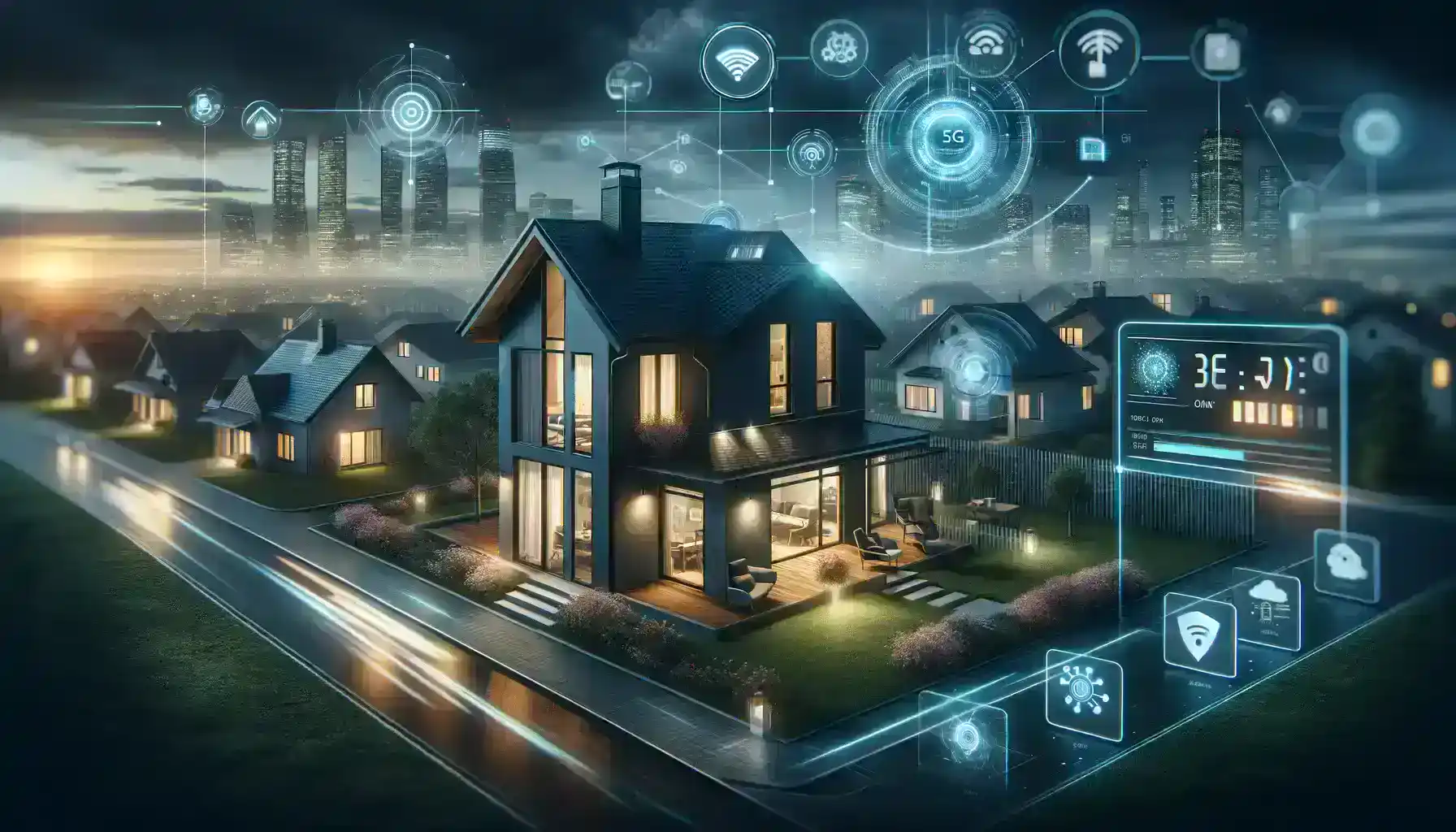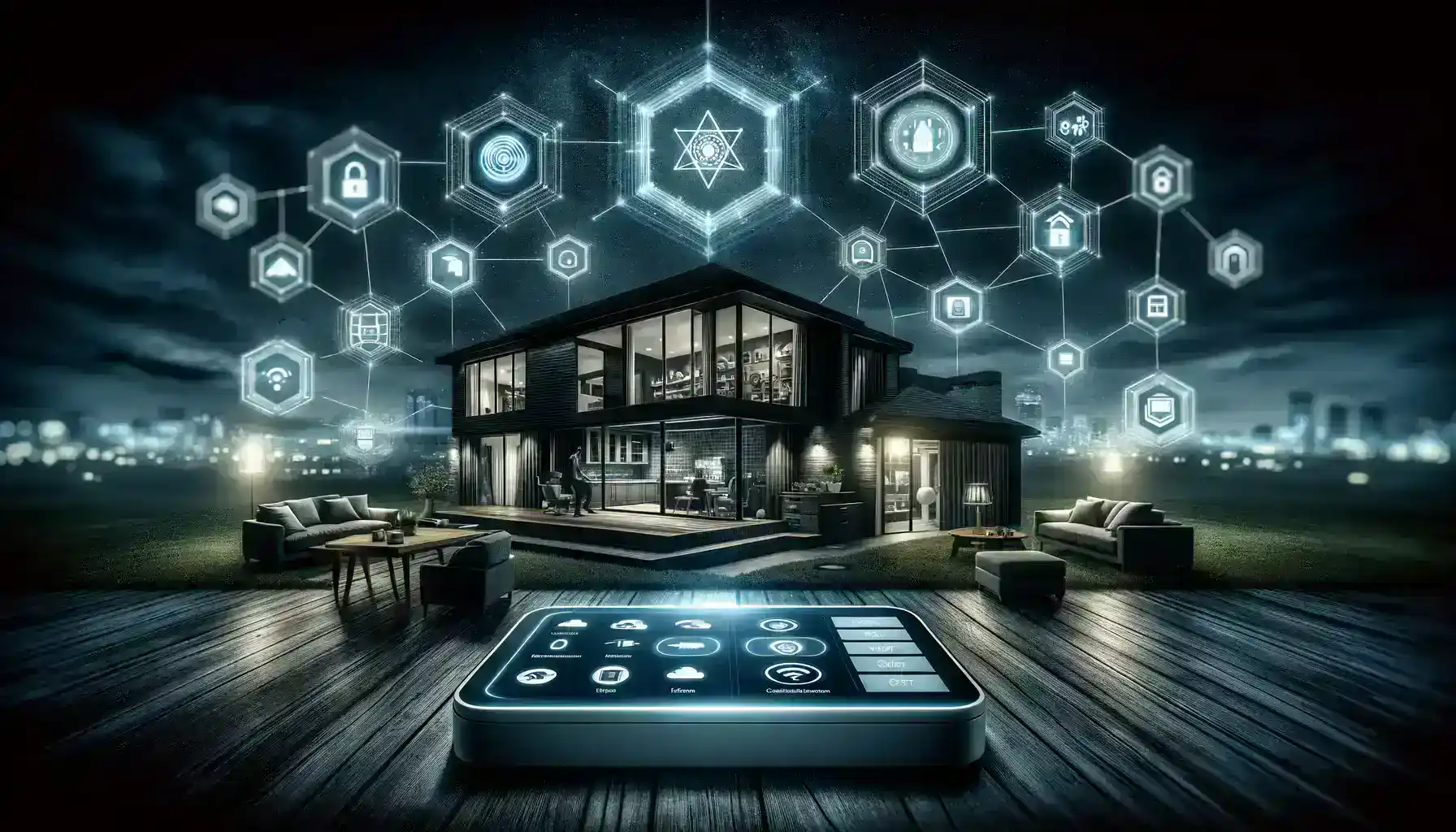Table of Contents
In the not-so-distant past, the notion of homes safeguarded by intelligent machines seemed confined to the imaginative landscapes of science fiction. However, the rapid convergence of Artificial Intelligence (AI) and the Internet of Things (IoT) has propelled this futuristic concept into the forefront of our reality. This article navigates the transformative journey from sci-fi reveries to the present, unraveling the profound impact of AI and IoT in shaping the frontlines of smart home defense. With a specific focus on IoT security solutions, we explore how these technological marvels have not only shattered the boundaries of what was once considered possible but have also become integral components of our daily lives, securing our homes in ways previously only dreamed of.
The Fusion of Sci-Fi Technology: AI and IoT

Once relegated to the domains of science fiction, the notion of homes guarded by intelligent machines has swiftly transitioned from fantasy to reality. The convergence of Artificial Intelligence (AI) and the Internet of Things (IoT) has propelled us into a new era of home security, where the once-fantastical concept of automated defense systems is now a tangible and practical application. In this dynamic landscape, AI algorithms and IoT devices seamlessly unite, forming an advanced network that not only fortifies homes through IoT security solutions but also possesses the adaptive capabilities to navigate the ever-evolving challenges of the modern world.
AI algorithms, representing the pinnacle of computational intelligence, are at the heart of this paradigm shift. No longer confined to the intricate plotlines of sci-fi novels, these algorithms are now seamlessly integrated into the fabric of our daily lives. In the context of smart home defense, they serve as the digital brain, processing vast amounts of data in real-time to discern patterns, anomalies, and potential security threats.
The partnership with IoT Security Solutions elevates this fusion to a new level of practicality. IoT devices, ranging from smart cameras and sensors to interconnected appliances, form the sensory network that captures the pulse of the home environment.
AI’s Role in Smart Home Security
Artificial Intelligence (AI) stands as a linchpin in the evolution of smart home AI security systems, fundamentally transforming their capabilities. At the core of this transformation are machine learning algorithms, enabling these systems to transcend static, rule-based approaches. Through continuous learning and adaptation, AI enhances the intelligence of security systems, ushering in a new era of personalized and efficient defense mechanisms.
In the empire of security cameras, the integration of AI brings about a revolutionary change. With the ability to analyze and interpret visual data in real-time, AI-equipped cameras discern nuanced details that escape conventional surveillance methods. The pivotal breakthrough lies in their capacity to distinguish between routine activities and potential threats. This discrimination minimizes false alarms, addressing a longstanding challenge in home security systems. The result is not only heightened accuracy but also a more streamlined and responsive defense system.
Nest Secure by Google: Nest Secure is a prime instance of how AI and IoT are transforming home security and providing IoT security Solutions. The system includes sensors, cameras, and smart locks, all interconnected to create a comprehensive defense network. Machine learning algorithms analyze data from these devices to understand patterns, allowing Nest Secure to differentiate between family members and potential intruders. This not only enhances security but also minimizes disruptions for homeowners.
Understanding IoT Security Solutions
Adaptive Surveillance Systems
In the ever-evolving landscape of IoT Security Solutions, adaptive surveillance systems represent a groundbreaking innovation. Leveraging the power of Artificial Intelligence (AI), these systems revolutionize traditional security measures. Various sensors strategically positioned within the home collect data, which is then meticulously analyzed by AI algorithms. The synergy of AI and IoT enables these systems to discern patterns and anomalies in real-time.
For illustration, if the system detects irregular activities such as a potential break-in or an unfamiliar presence, it autonomously triggers alarms or notifies homeowners through mobile applications. This adaptive approach not only minimizes false alarms but also ensures a swift and precise response to genuine security threats, transforming home surveillance into a proactive and intelligent defense mechanism.
Smart Access Control
IoT security solutions impact extends seamlessly to access control, where smart devices redefine the concept of home security. Integrating IoT-enabled door locks and security systems with advanced AI algorithms brings forth a paradigm shift in authentication. Facial recognition and biometric data analysis become the cornerstone of smart access control.
Recognizing and authenticating individuals with unparalleled accuracy, this technology enhances not only the security aspect but also introduces a level of convenience previously unseen. Homeowners experience a seamless, keyless entry, where the amalgamation of IoT and AI not only fortifies security but also augments the overall user experience in the realm of smart home defense.
Amazon Ring Alarm: Amazon Ring Alarm demonstrates the power of IoT integration in home security. The system includes sensors for doors and windows, motion detectors, and a central hub that connects to the user’s smartphone. In case of an intrusion, the system sends instant alerts to the homeowner’s phone, and with IoT connectivity, users can remotely monitor and control IoT security solutions settings from anywhere in the world.
The Future of Smart Home Defense: AI and IoT Advancements

The trajectory of smart home defense is poised for groundbreaking advancements as technology hurtles forward. Embracing the ever-expanding realm of possibilities, the integration of Artificial Intelligence (AI) and the Internet of Things (IoT) is set to redefine the very essence of home security.
Predictive Analytics and Proactive Defense
One compelling facet of the future lies in predictive analytics. AI, equipped with vast datasets and historical patterns, will evolve to anticipate potential security threats before they materialize. This foresight enables a proactive defense mechanism, where the smart home system can pre-emptively respond to emerging risks. For instance, if an AI algorithm detects suspicious patterns in neighborhood data or weather conditions, it could adjust security protocols in real-time, fortifying the home against unforeseen challenges.
Enhanced Machine Learning Algorithms
The evolution of machine learning algorithms is pivotal in refining the adaptability and intelligence of smart home defense. Future systems will not only learn from historical data but will also adapt dynamically to evolving threats. Continuous learning ensures that the defense mechanisms become increasingly sophisticated over time, providing a robust shield against the ever-changing landscape of security risks.
5G Integration for Real-Time Responsiveness
The integration of 5G technology heralds a new era of connectivity and real-time responsiveness. With ultra-fast and low-latency communication, smart home devices can communicate seamlessly, enabling quicker and more coordinated responses to security events. For instance, surveillance cameras, linked via 5G, can relay high-definition video feeds in real-time, allowing for instantaneous analysis and response by AI algorithms.
Companies like Johnson Controls are already pioneering AI and IoT integration for smarter and more anticipatory security systems. Their solutions leverage predictive analytics to identify potential threats, enabling a preemptive response.
In essence, the future of smart home defense promises a convergence of AI and IoT technologies, propelling security systems beyond mere reactivity to a state of proactive anticipation.
Addressing Privacy Concerns: Balancing Security and Individual Rights
The integration of Artificial Intelligence (AI) and the Internet of Things (IoT) into home security introduces a transformative landscape of heightened protection. However, this technological leap forward also brings forth legitimate concerns regarding individual privacy. Striking a delicate balance between robust security measures and the preservation of personal privacy is paramount for the widespread acceptance and ethical implementation of IoT security solutions.
Innovators in the field are proactively responding to these concerns with a commitment to privacy-centric design. One notable approach involves on-device processing, where sensitive data is processed locally within the device rather than being transmitted to external servers. This ensures that critical information remains within the confines of the user’s premises, minimizing the risk of unauthorized access.
ADT Command and Control: ADT, a renowned name in home security, has embraced the IoT era with its Command and Control platform. This system integrates smart home devices with traditional security measures. Homeowners can control their security settings through a centralized platform, incorporating smart thermostats, lighting, and security cameras. ADT’s commitment to staying at the forefront of technology showcases the evolution of IoT security solutions.

Challenges and Considerations in IoT Security Solutions
Despite the evident advantages of integrating Artificial Intelligence (AI) and the Internet of Things (IoT) into smart home defense, several challenges necessitate careful consideration. Foremost among these challenges are privacy concerns, as the extensive data collection raises questions about the safeguarding of personal information. The potential for hacking poses a significant threat, requiring robust IoT security solutions measures to protect against unauthorized access and breaches.
Furthermore, the industry faces the imperative need for standardization. With diverse manufacturers contributing to the development of IoT security solutions, a lack of standardized protocols can hinder interoperability and create vulnerabilities. Collaborative efforts among manufacturers and developers are essential to establish uniform standards, ensuring that technological advancements are accompanied by a strong foundation of security measures. In navigating these challenges, the industry can forge a path toward a secure and standardized future for IoT security solutions in smart homes.
Conclusion: Living in the Future Now
From the futuristic visions of sci-fi to the realities of today, the integration of AI and IoT in smart home defense marks a significant milestone in the evolution of home security. Real-world instances like Nest Secure, Amazon Ring Alarm, and ADT Command and Control showcase the effectiveness of IoT security solutions in providing not just protection but also convenience.
As technology continues to advance, the future promises even more sophisticated and anticipatory smart home defense systems, making the sci-fi dreams of the past a tangible part of our daily lives.
As we embrace the future of smart homes, it is crucial to remain vigilant, addressing challenges and pushing for innovations that prioritize both convenience and security. The journey from sci-fi to reality continues, and the frontlines of smart home defense are more advanced and interconnected than ever before.